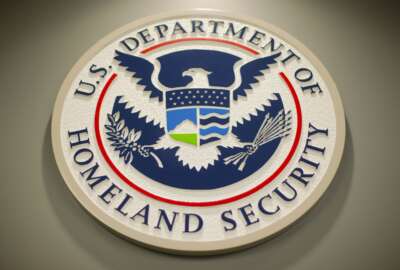
From airports to immigration to emergency relief, DHS urged to improve ‘customer experience’
The Homeland Security Advisory Council's latest report suggest better staffing models, improved technology and other actions could improve CX at several DHS com...
Department of Homeland Security advisors say DHS components can improve their interactions with the public — during airport security screening or when processing immigration benefits, for instance — through more flexible staffing models, by replacing paper-based processes with digital technologies, and a host of other actions aimed at bettering the “customer experience.”
The recommendations come from the Homeland Security Advisory Council, which unanimously accepted the final report from its Customer Experience and Service Delivery Subcommittee during a Dec. 6 meeting. The recommendations will be formally presented to Homeland Security Secretary Alejandro Mayorkas.
The subcommittee’s report could provide a blueprint for several DHS components under the Biden administration’s expansive CX agenda.
The CX subcommittee includes Lynn Good, president and chief executive officer of Duke Energy; Scott Kirby, CEO of United Airlines Holdings; Dmitri Alperovitch co-founder and chairman of Silverado Policy Accelerator; Robert Isom, CEO of American Airlines; and Hamdi Ulukaya, founder and CEO of Chobani.
Their report and recommendations center on DHS’ “high-impact service provider” agencies, designated as such due to the amount of individuals they interact with on a daily basis. They include Customs and Border Protection, the Federal Emergency Management Agency, the Transportation Security Administration and U.S. Citizenship and Immigration Services.
The report recommends DHS can “create accountability for customer experience” by creating a CX office at DHS headquarters. The organization would “encourage a customer experience culture change and collaboration across DHS and serve as a valuable resource for training and CX principles.”
Each of the high-impact service provider agencies should also establish CX offices, the report continues, to play “an integral role in designing products and services incorporating human-centered design principles.”
Meanwhile, the subcommittee’s report also highlights the need for a more “flexible” staffing model at DHS, where components often operate with hundreds of full-time equivalent positions unfilled, according to the report.
“Having the right number of front-line personnel at the right locations and at the right times is a critical element to a successful customer experience and service delivery,” the report states.
DHS has only validated about half of its 122 staffing models to determine whether they truly meet its needs. The report recommends the agency design “more flexible, nimble and effective” staffing models aligned with customer numbers and processing times.
Technology a ‘force multiplier’
The report suggests technology could also be a “force multiplier” at DHS via using virtual processing and other solutions to reduce staffing burdens.
CBP, for instance, could alleviate demands on its frontline personnel by allowing for remote passenger interviews at ports of entry. And the report also suggests TSA could conduct “off-site” screening of carry-on and checked bags, a move that could be helpful when there are sudden surges in passengers.
“Officers will always need to be present to adjudicate any bag searches that need to occur, but off-site personnel can handle the initial image screening,” the report states.
The report also notably recommends DHS consolidate its two primary traveler programs: PreCheck and Global Entry. It suggests DHS could allow travelers to initiate their enrollment for Global Entry at PreCheck locations.
“This would allow customers to more quickly access their PreCheck benefits, which reduces staffing pressures on the TSA airport checkpoints,” the report states. “Streamlining the front end of this process will still preserve CBP’s authority to conduct an in-person interview for the traveler to complete their Global Entry enrollment.”
Meanwhile, the report states DHS should strive to continue replacing paper processes with digital technology. It applauded FEMA’s efforts to integrate its registration platform with Login.gov, and to create a common disaster aid applications for multiple agencies.
USCIS is also working to digitize dozens of immigration forms, ultimately to reduce 3.6 milion burden hours on the public, according to the report.
It suggests continued progress could be made through expanding the use of digital driver’s licenses – an area TSA is already exploring — and continuing to “innovate the use of biometrics,” including facial matching technologies.
“DHS should identify if it can further innovate its use of opt-in biometrics to reduce officer interactions for those passengers whose identities have been verified and are otherwise determined to be low risk,” the report states,
The digitization recommendations come as DHS builds out a nascent cadre of “technologists” geared specifically toward improving product management and customer experience across components.
Measuring CX performance
The council’s report also highlights how DHS could do a better job measuring customer experience data and sharing it with the public.
“The department can improve the customer experience by enhancing the quality of the information it shares online, in-person, and on social media while increasing transparency and accountability with its customers,” it states.
A lot of improvement could be made through simply telling customers how long they will have to wait for services, the report finds. CBP could provide customers with live wait times at ports of entry, it continues, while FEMA could publish how long it will take to process disaster aid requests.
Meanwhile, USCIS is addressing a significant backlog of immigration applications and could notify customers of the anticipated processing times for different types of applications, according to the report.
“The department should better educate its customers about the processes they need to engage in,” the report states. “However, most importantly, DHS should build trust and accountability with its customer base by clearly communicating with passengers what the expected processing times will be. Customers’ time is valuable, and customers have a right to know how long they will need to wait for a required government process.”
Copyright © 2024 Federal News Network. All rights reserved. This website is not intended for users located within the European Economic Area.
Follow @jdoubledayWFED



